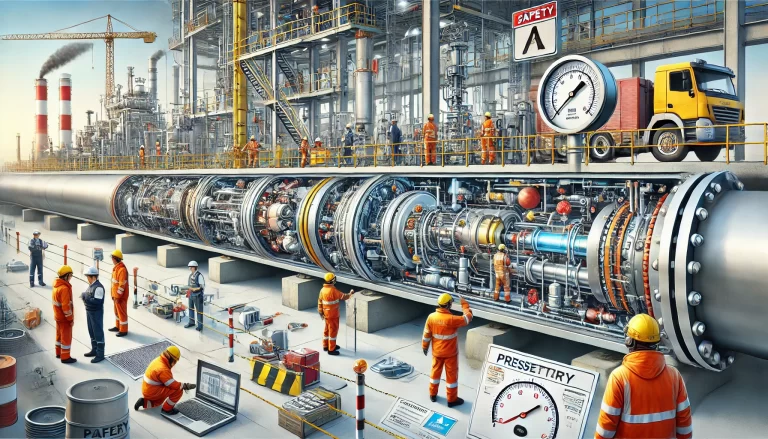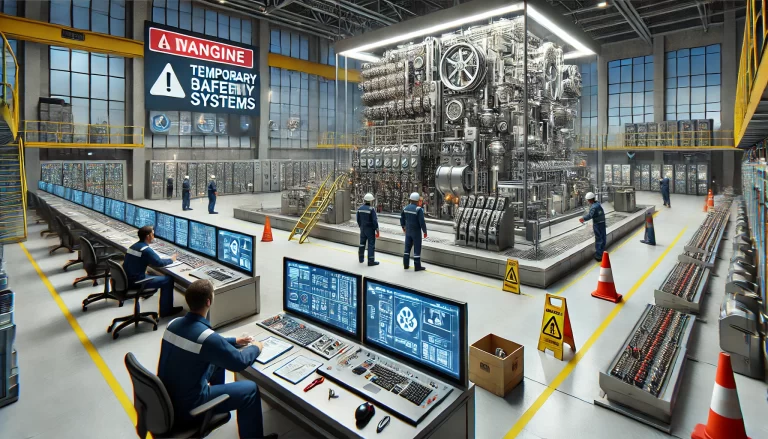1. Purpose & Scope
This guide defines what to check during routine field rounds and system checks for instrumentation in chemical plants. The goal is to detect abnormalities early, prevent trips/incidents, and ensure on‑spec product quality.
2. Core Tasks of Inspection
Identify abnormal instrument conditions promptly and address them before they cause unit shutdowns, safety events, or off‑spec production.
Tailor the depth and frequency to process criticality while keeping to the standard items below.
3. General Field Rules
Carry required PPE and a multi‑gas (3‑in‑1) detector when entering units.
All inspected instruments must have clear, correct tag numbers; add missing/unclear tags.
Keep instruments clean; no leaks, drips, or spills near devices.
Verify no excessive vibration, heat, or moisture ingress jeopardizes devices.
Follow the planned route and timing; record findings on the inspection sheet immediately.
Increase frequency for known bad actors and critical equipment; do not limit to the checklist if conditions warrant.
Inspect standby/backup equipment daily.

4. Device‑by‑Device Inspection Checklists
Use these as one‑line checks; tick (✔/✖) and add remarks.
4.1 Pressure & Differential Pressure Transmitters
Mechanical condition intact; glands/impulse lines no leaks.
Isolation/vent/drain status correct; blind caps tightened.
Heat‑trace/insulation as required; no water ingress at housings.
No harmful vibration.
Indication vs. nearby gauge/DP gauge consistent.
4.2 Pressure / Differential Pressure Switches
Housing/glands sealed; cabling strain‑relieved; no leaks at tapping points.
No water ingress; no harmful vibration.
Isolation/vent/drain correct; heat‑trace/insulation as required.
4.3 Temperature Transmitters
Housing sealed; no condensation; cable glands tight.
No harmful vibration; indication matches nearby bimetal thermometer where applicable.
4.4 Displacer‑type Level / Interface Transmitters
Body/flanges tight, no leaks; displacer chamber properly isolated from gas pockets.
Reading agrees with local level (glass gauge / magnetic indicator) or parallel instrument.
Isolation/vent/drain correct; water ingress, insulation/heat‑trace OK; no harmful vibration.
4.5 Displacer Level / Interface Switches
Mechanical integrity; no leaks; isolation/vent/drain correct and capped.
Verify chamber no gas accumulation; housing sealed; insulation/heat‑trace OK; no vibration.
4.6 Float‑type Level Transmitters
Housing sealed; no leaks.
Counterweight/slider secure; linkages move smoothly; lubricate as specified.
4.7 Coriolis Mass Flowmeters
Body, process joints no leaks; housings dry.
Check for pipe‑induced vibration; alarms/status normal.
Flow, density, and temperature values within expected ranges.
4.8 Vortex / Turbine / Magnetic (In‑line & Insertion) Flowmeters
Integrity/leak‑free; housings dry.
Alarms/status normal; readings within expected range.
4.9 Ultrasonic Flowmeters (Clamp‑on / In‑line)
Transducer mounting tight and aligned; cabling secured.
Housing dry; alarms/status normal; flow/velocity within range.
4.10 Control Valves (General)
Valve, positioner, I/P converters intact; supply air pressure correct.
Air/Signal tubing leak‑free; fittings tight.
Positioner feedback linkage secure; travel vs. signal correlates.
No flange/packing leaks; handwheel position correct; no harmful vibration.
4.11 Control / Interlock Valves (with Solenoids & Limit Switches)
As per 4.10, plus: solenoid(s) fixed, dry, wired correctly; limit switches linked and sealed.
For XV interlock valves (e.g., hydroprocessing): ensure max. supply pressure where specified; verify valve travel and feedback.
4.12 Self‑operated Regulators
Tappings/tubing joints tight; no leaks; no harmful vibration.
Packing/flanges tight.
4.13 Radar Level Gauges & Local Tank Indicators
Antenna/electronics and bypass/remote indicators intact and sealed.
No leaks; indications within normal range; no alarms.
4.14 Servo Level Gauges
Electronics and local indicators intact and sealed; no leaks; no alarms.
4.15 Combustible / Toxic Gas Detectors
DCS readings normal; no persistent false alarms.
Field heads intact; rain shields present; mounting height/location correct.
Housings sealed; status normal.
4.16 On‑line Analyzers (Process & CEMS)
Analyzers intact, housings sealed; sample/standard/back‑purge lines tight.
Sample flow and pressure within spec; sample conditioning heat‑trace/insulation OK.
Readings normal; no alarms; standards (gas/solution) available and in service.
4.17 RTU Panels (Remote Telemetry)
Cable entries sealed; status normal; no temperature/sun/ingress issues.
No alarms; ventilation adequate.

5. Control Room / Cabinet Room Items
5.1 DC Power Supplies
Status LEDs normal; fans (if present) running.
5.2 Power Switchgear/Breakers
Breaker positions correct; terminal‑type supplies show normal status.
5.3 Intrinsically Safe Barriers / MTA Boards
Power LEDs normal on IS barriers and dual‑feed MTA boards.
5.4 BN3500 (or equivalent) Turbomachinery Monitors
OK LEDs on all channels; no fault/alarm states.
5.5 Cabinets & Consoles
Filters clean; fans running; trunking and covers intact.
No loose items; interior clean; I/O status LEDs normal.
DCS/SIS/PLC card indicators normal.
5.6 Room Housekeeping & HVAC
Rodent traps/boards in place and checked.
Air‑conditioners operating correctly (mode, setpoints, actual values, humidity, alarms).
Room clean and tidy.
5.7 Field Junction Boxes
Boxes intact; ID labels present; covers fully bolted; spare entries plugged; glands tight.

6. Seal‑Fluid & High‑Pressure Lube Systems
Seal‑fluid pumps running normally; reservoir level within range.
HP lube pumps running; tank levels normal; no loose fittings/leaks.
7. Rotating Machinery Instrumentation Packages
7.1 FCCU Main Air Blower (Three‑machine set)
Lube oil P/T normal; bearing metal temp, shaft vibration/displacement, turbine speed, main air flow normal trends.
Trip/anti‑surge valves and IGV actuators respond; no controller alarms; trend review OK.
7.2 Standby Main Blower
Same as §7.1; verify no leaks and trends normal; no controller alarms.
7.3 Gas Compressors (Catalytic/Coker/Circulating H₂/Booster H₂)
Lube oil P/T normal; bearing & rotor monitors normal.
Stage in/out flow & pressure normal; anti‑surge control effective.
No controller alarms; trends normal; no field leaks.
7.4 Reciprocating Compressors (CDU/CCR/HDS/HDT)
Inlet/outlet bottle instrumentation joints tight; no harmful vibration.
PTs match local indicators; load‑control solenoids tight; separator level matches local gauge.
DCS alarms/trends normal; no field leaks.
7.5 Screw Compressors (CDU/Gas Holder)
Same as §7.4: PTs agree; separator level agrees; no alarms; no leaks.
7.6 Electro‑hydraulic Servo Systems (e.g., slide valves)
Local panel shows inputs, valve position (panel/DCS/scale) aligned; power OK; no alarms.
JB and field terminations sealed; high‑temp cable protection intact.
7.7 Auto Back‑wash Filter Control (Diesel H₂/Unit Hydrotreating)
Local panel display normal; panel doors sealed; HMI watertight.
Intermediate JB sealed; all actuator air/signal lines tight.

8. Recording & Compliance
Use the Instrument Inspection Record to document date/time, area, tag, status (✔/✖), findings, and actions.
Escalate abnormal trends or repeated alarms to engineering; open work orders.
Keep records traceable for audits and reliability analysis.
8.1 Sample Inspection Record (Template)
| Date/Time | Unit/Area | Tag | Device Type | Check Items (short) | Status | Remarks/Actions | Inspector |
|---|---|---|---|---|---|---|---|
| 2025‑08‑22 09:30 | HDS Reactor | PT‑2101 | DP Transmitter | Glands dry; vents capped; no vib; agree w/ PG | ✔ | — | J. Lee |
| 2025‑08‑22 09:45 | Tank Farm | LIT‑3304 | Radar Level | Housing dry; no alarms; agrees w/ local | ✖ | Periodic high noise—check antenna purge | J. Lee |
9. Frequencies (Minimum)
Twice daily: Instrument/electrical team unit rounds.
Hourly: Patrols on major hazard areas and critical packages during unstable operation.
Daily: Standby equipment checks (fans, compressors).
Weekly: Junction boxes, analyzer shelters housekeeping.
Monthly: Filter media cleaning; cabinet filter checks; detector functional checks (per site procedure).

10. Quick Abnormality Reference (Typical)
Erratic transmitter signal → check for EMI, wet housings, loose shielding, impulse line blockage, gas in level chamber.
Valve travel mismatch → supply air low, linkage loose, I/P fault, instrument air leaks.
Analyzer drift → sample flow/pressure off, temp control off, standards depleted, water ingress.
Gas detector nuisance alarms → wrong height, blocked rain hood, water ingress, calibration overdue.
